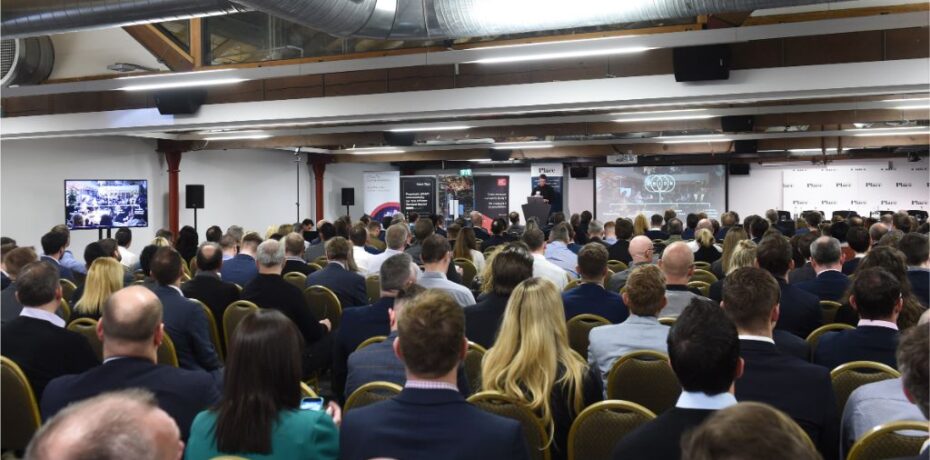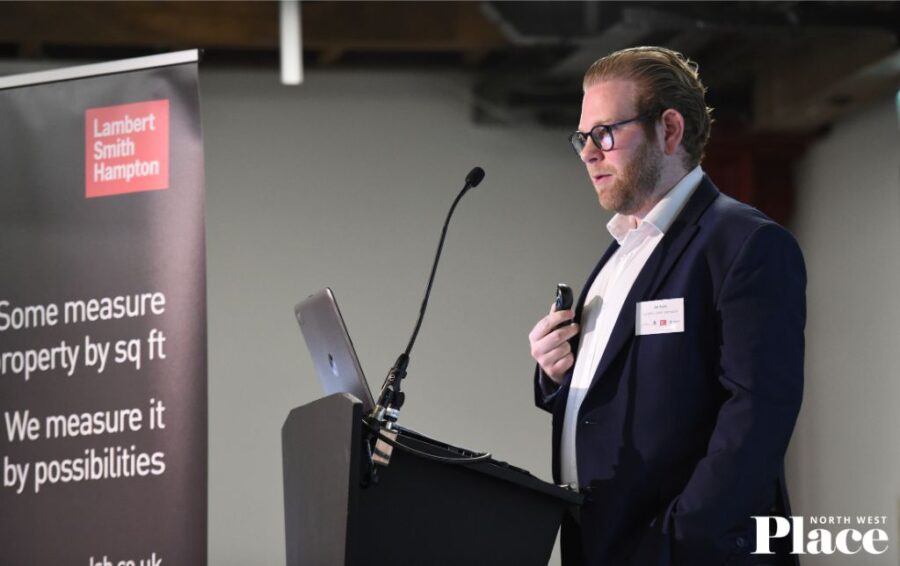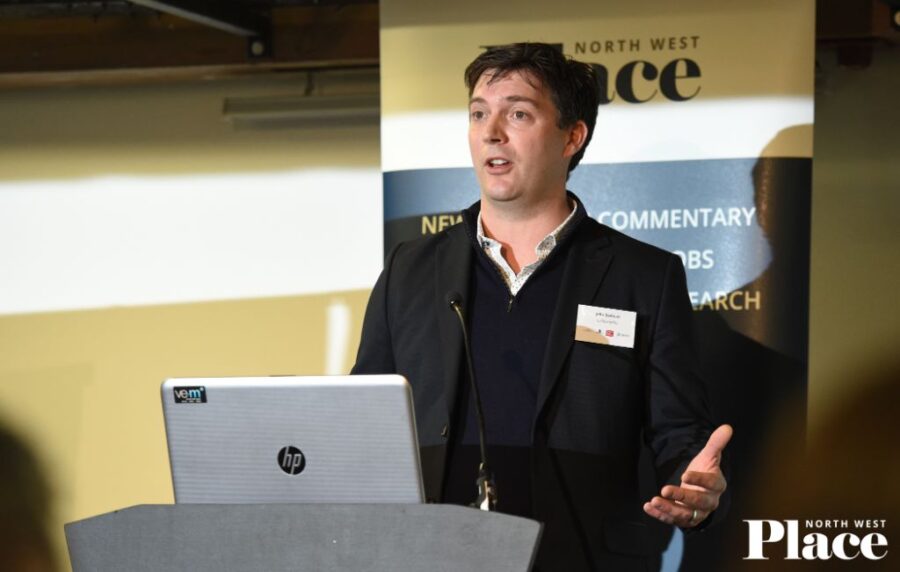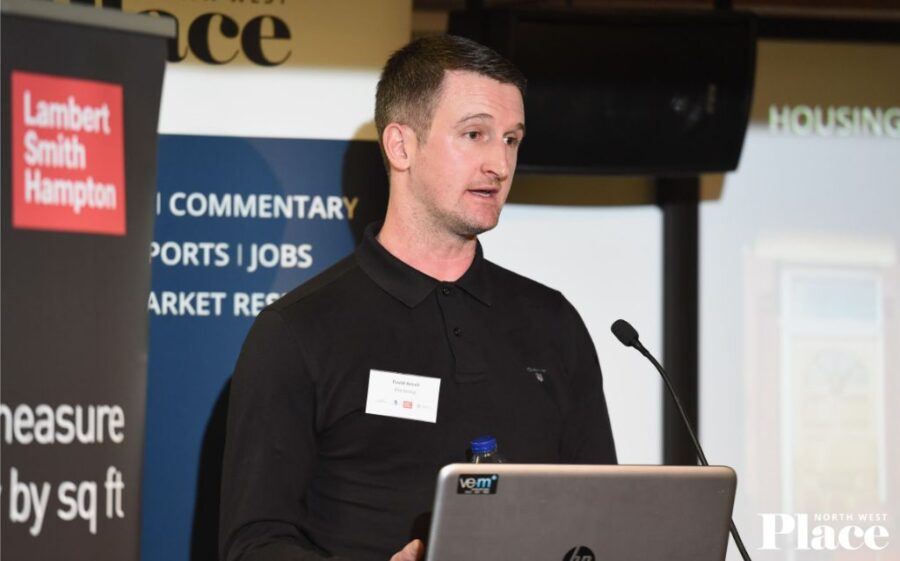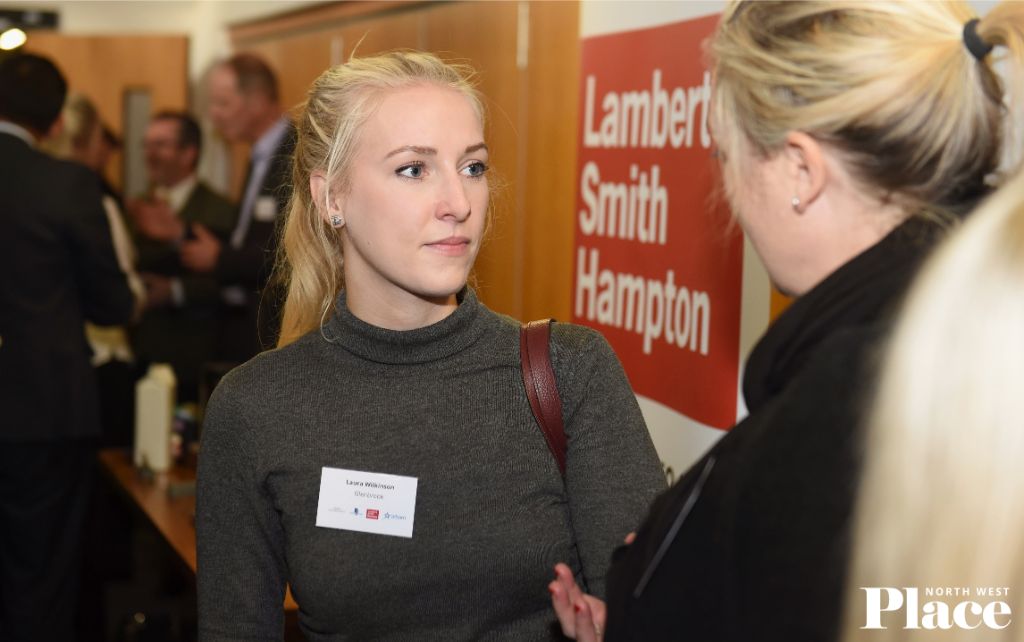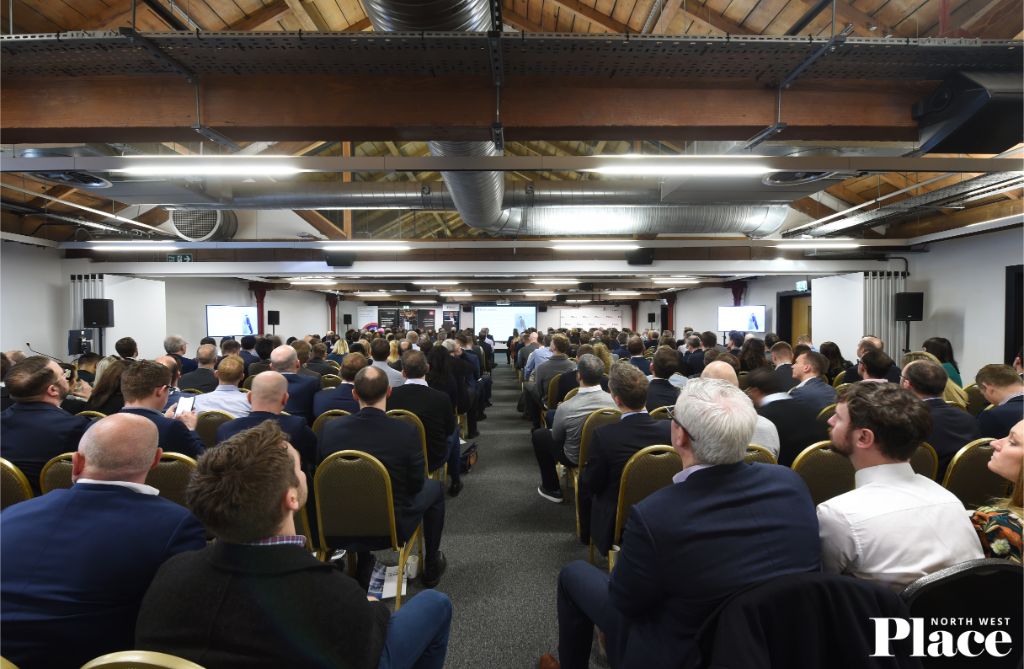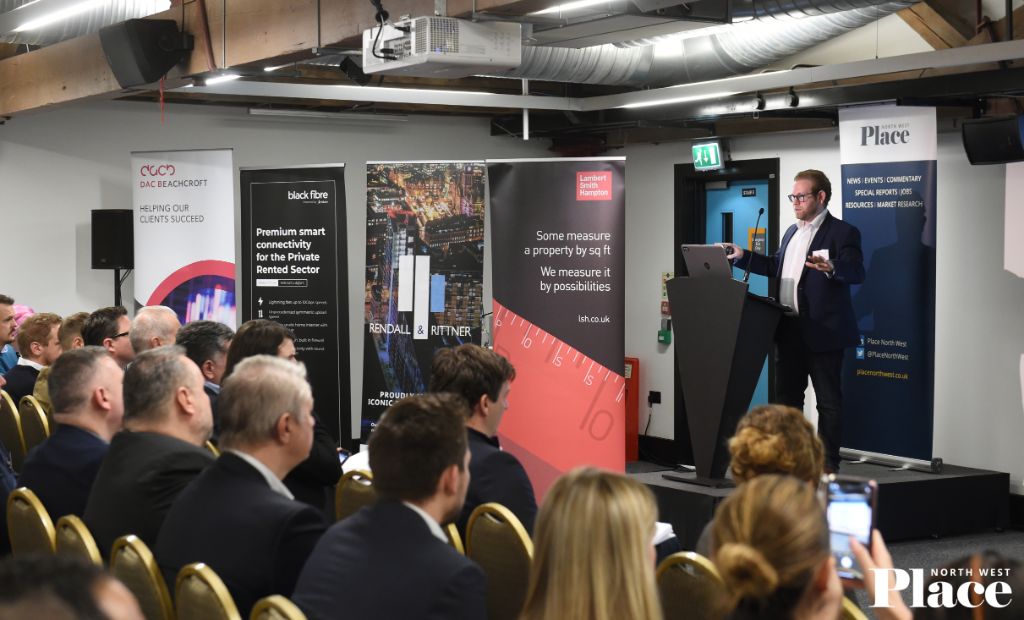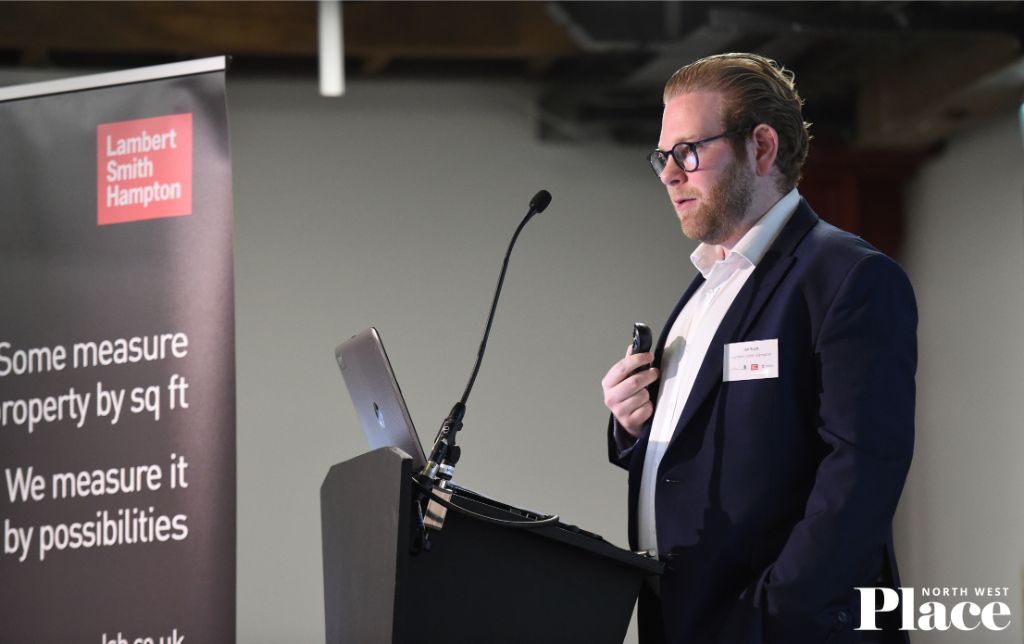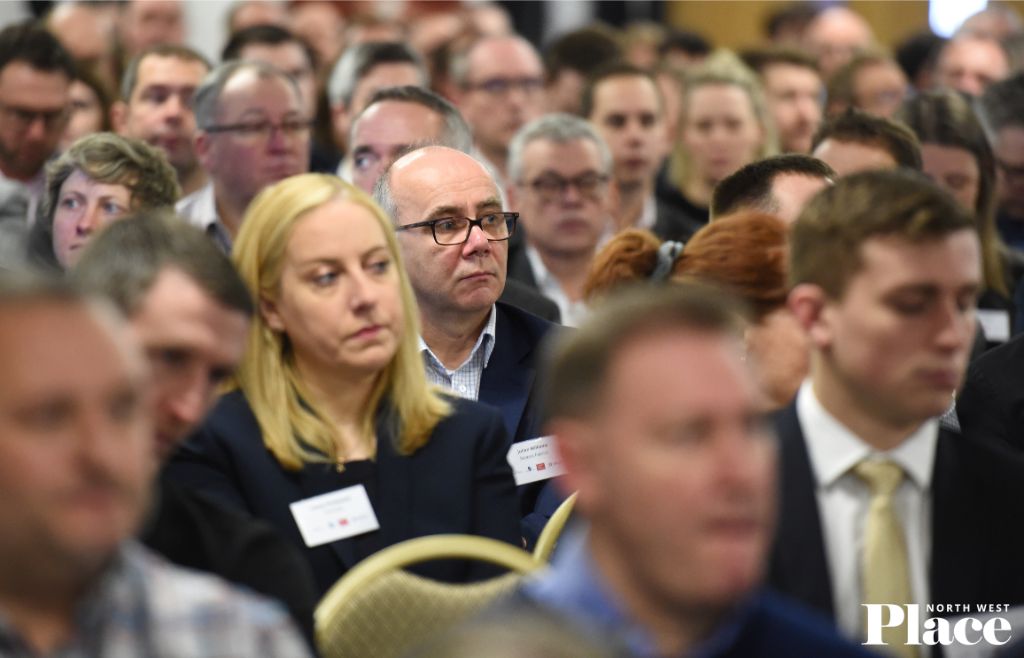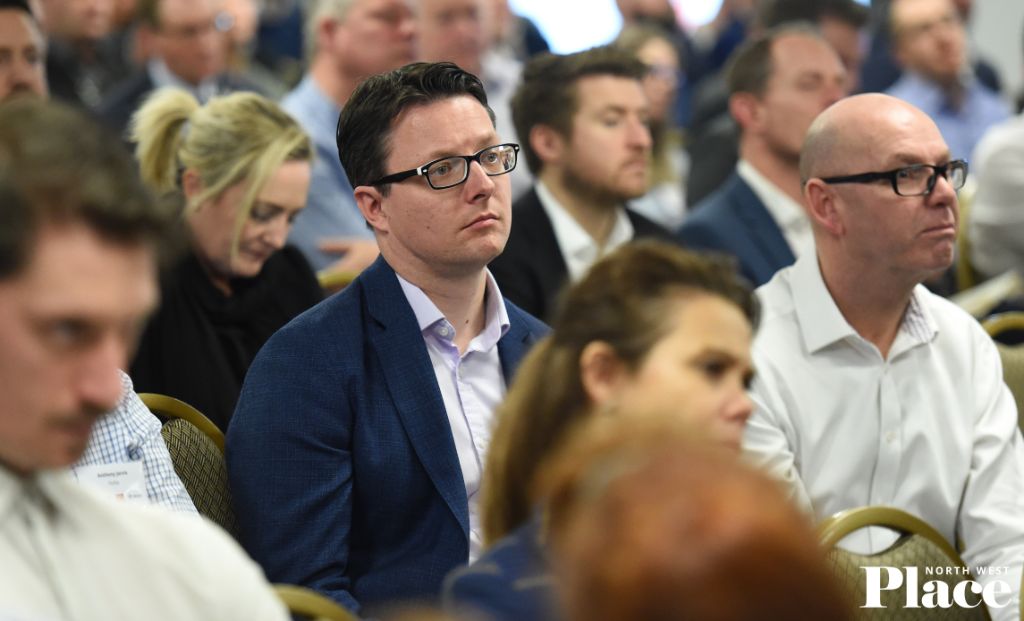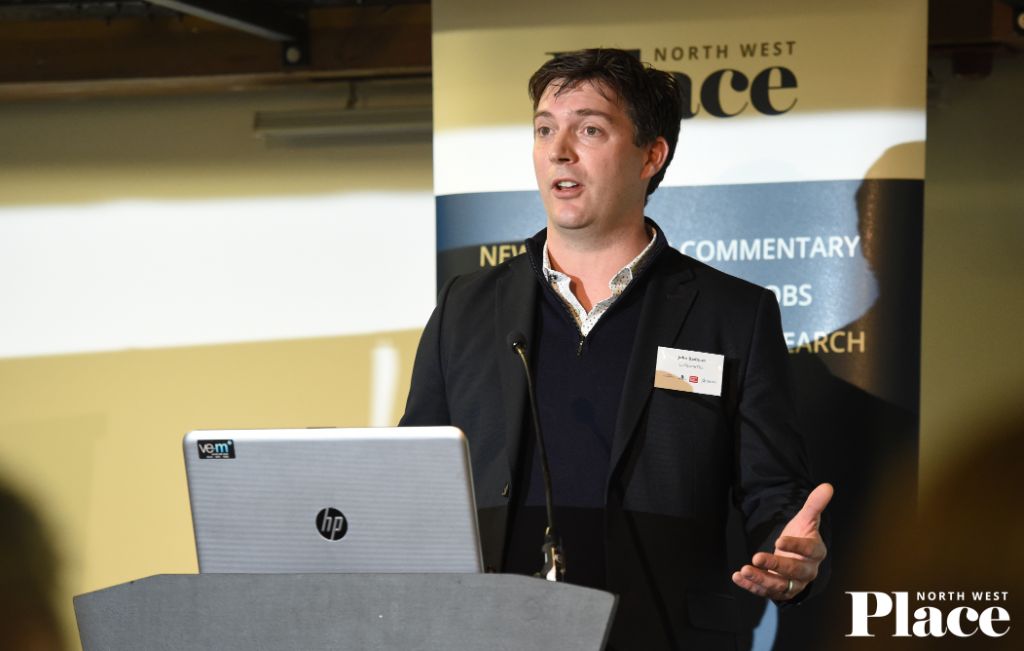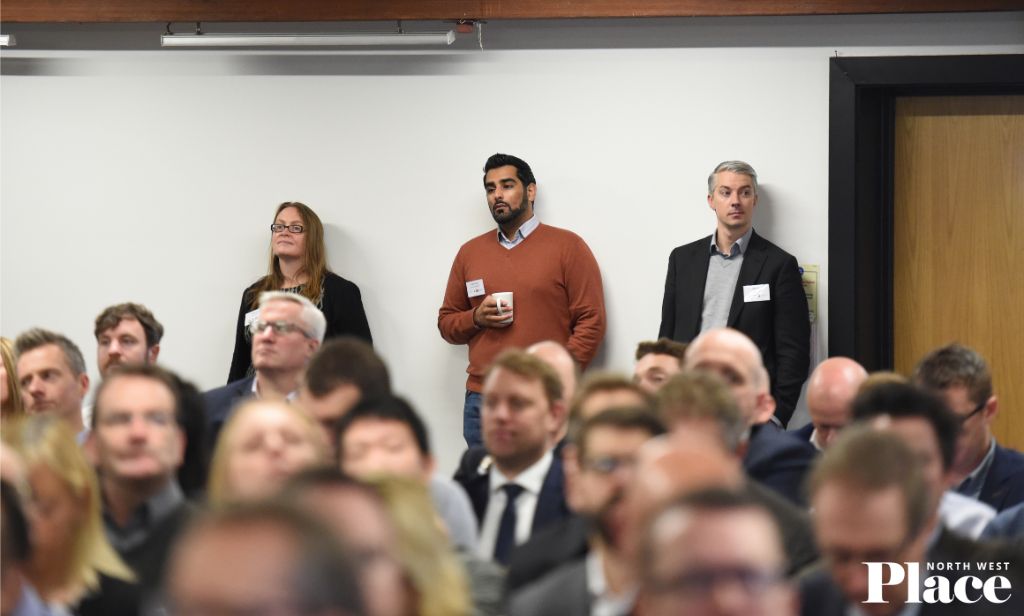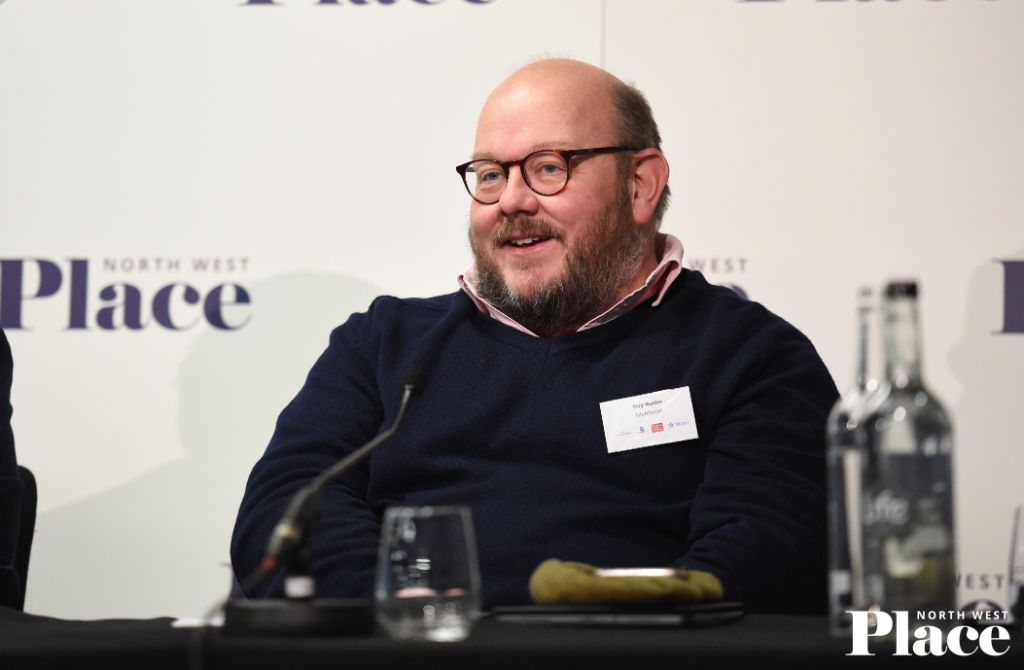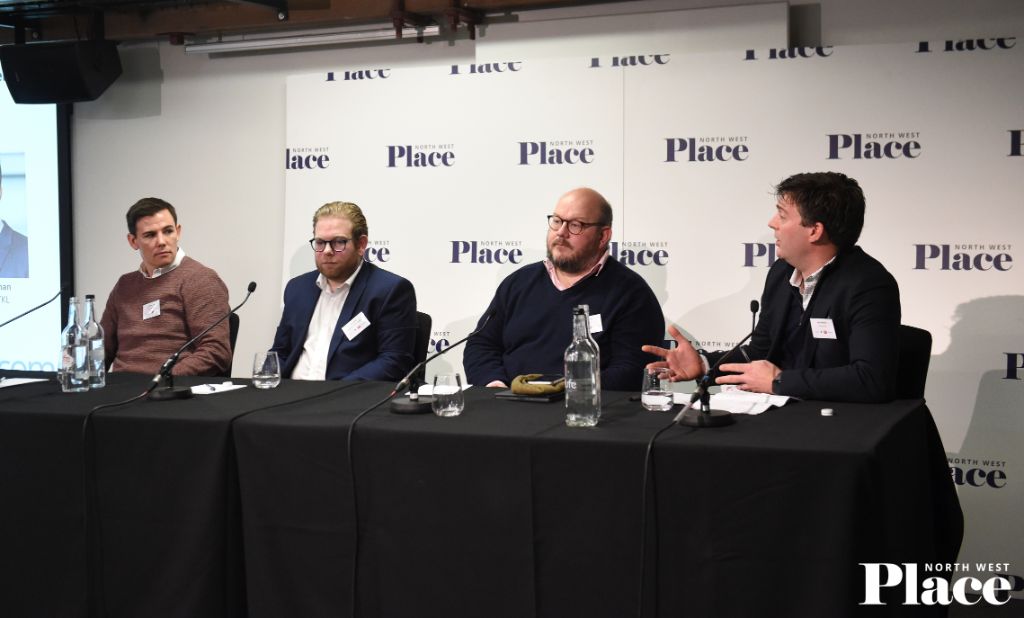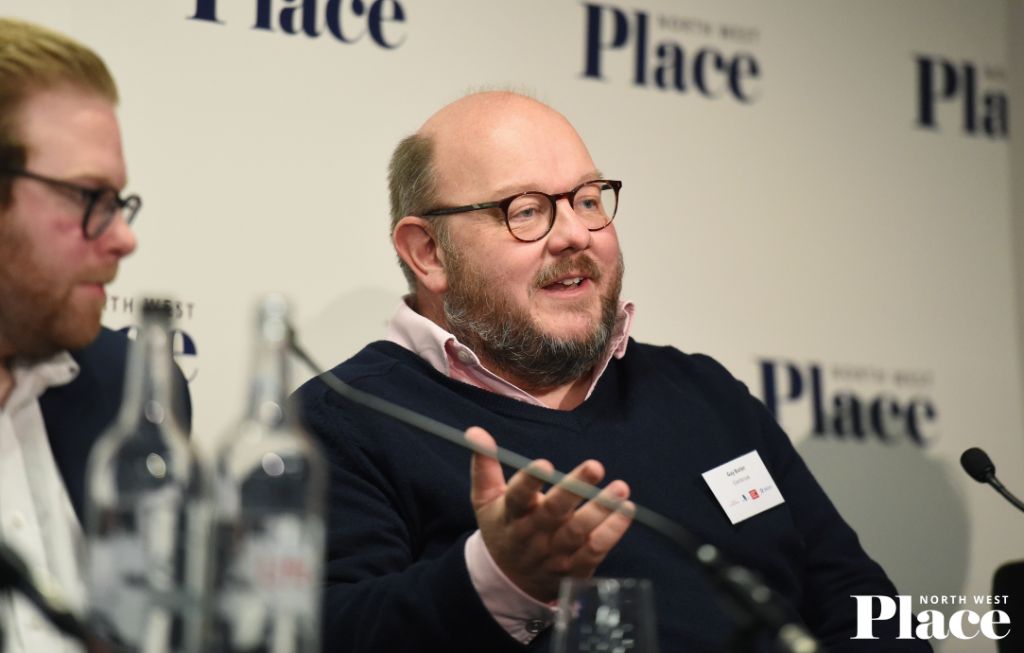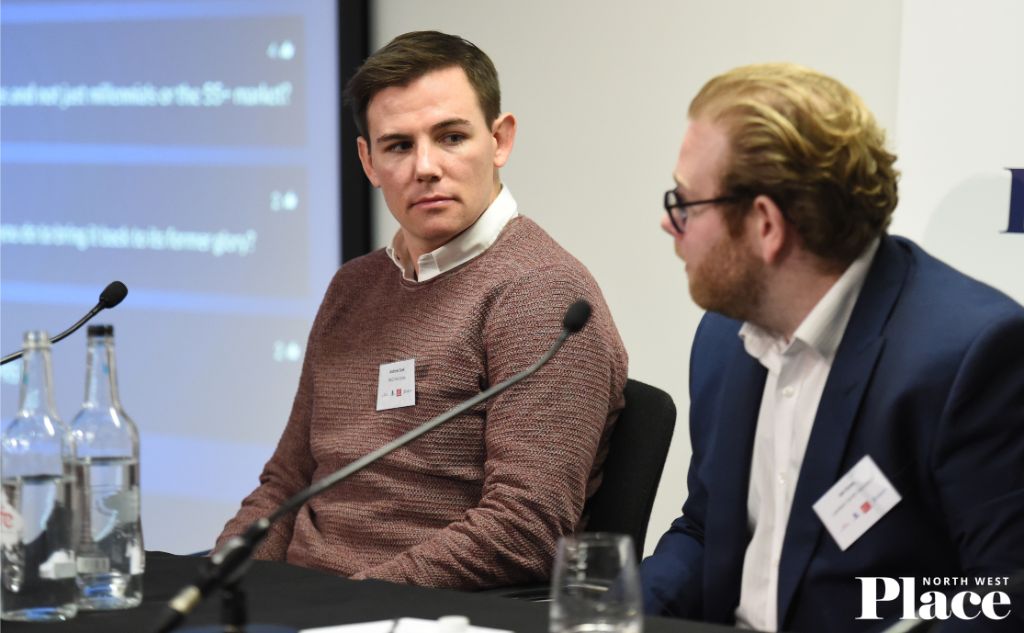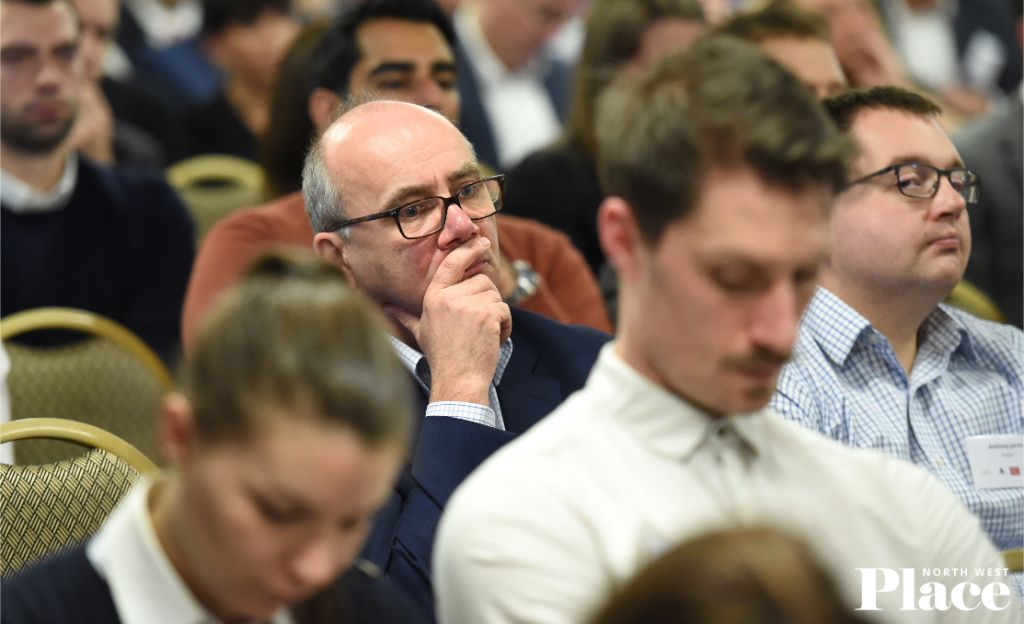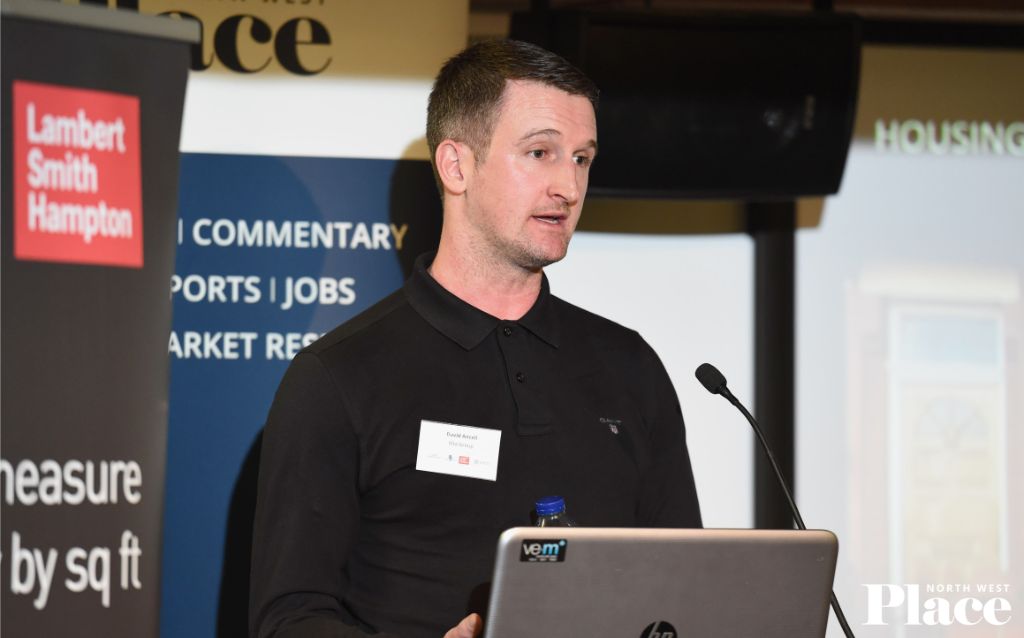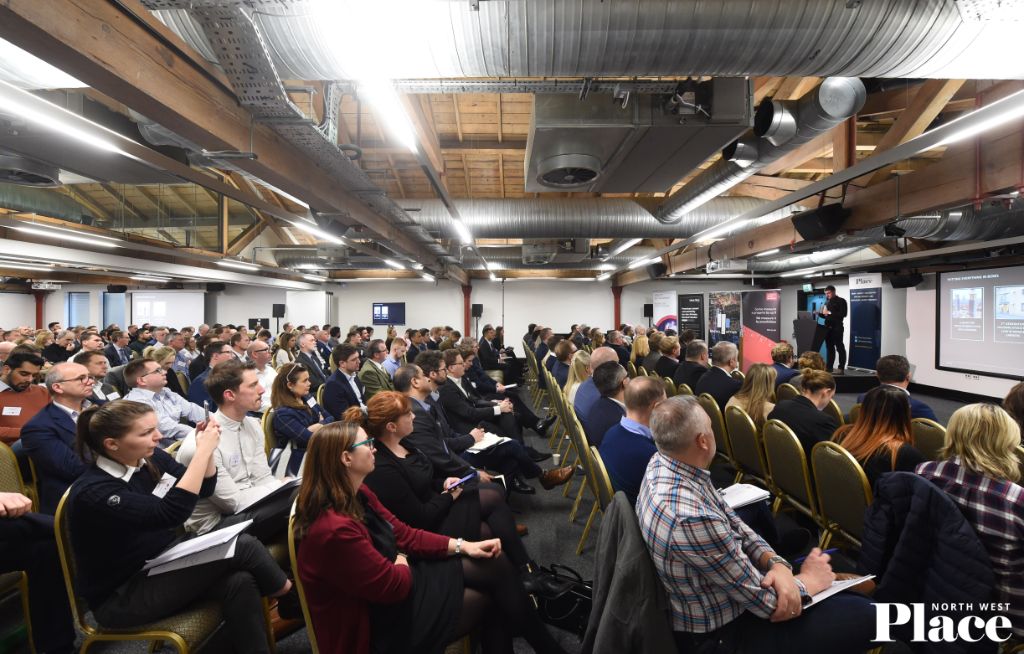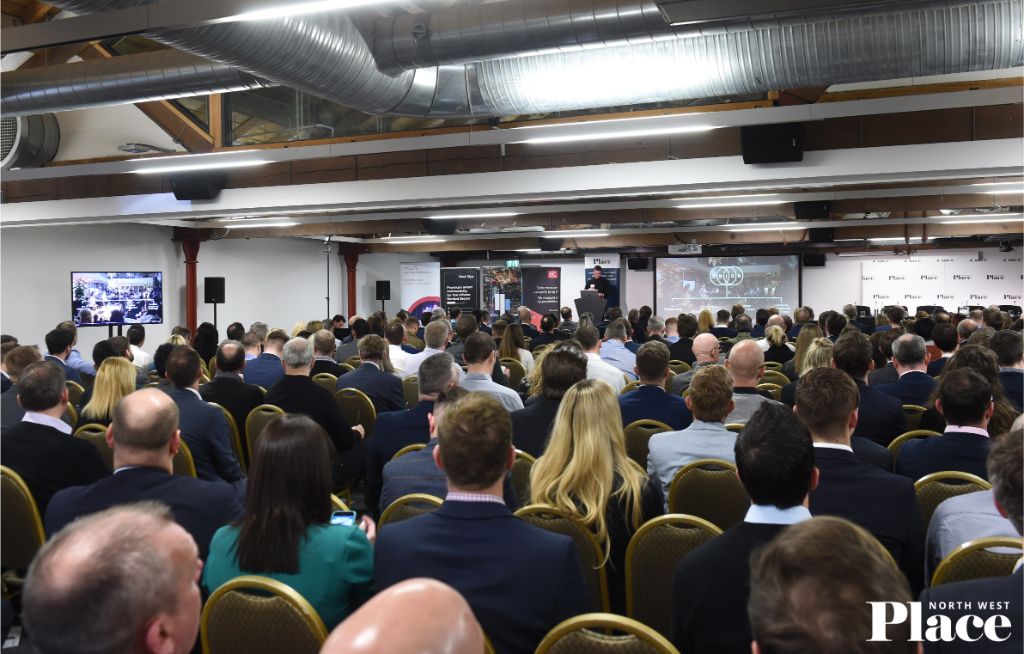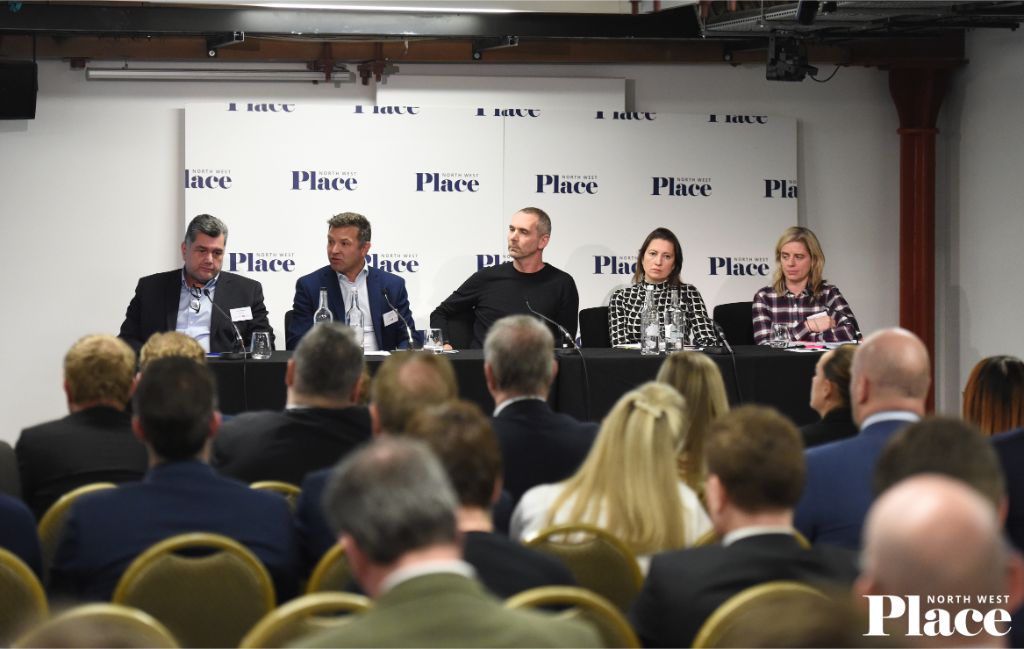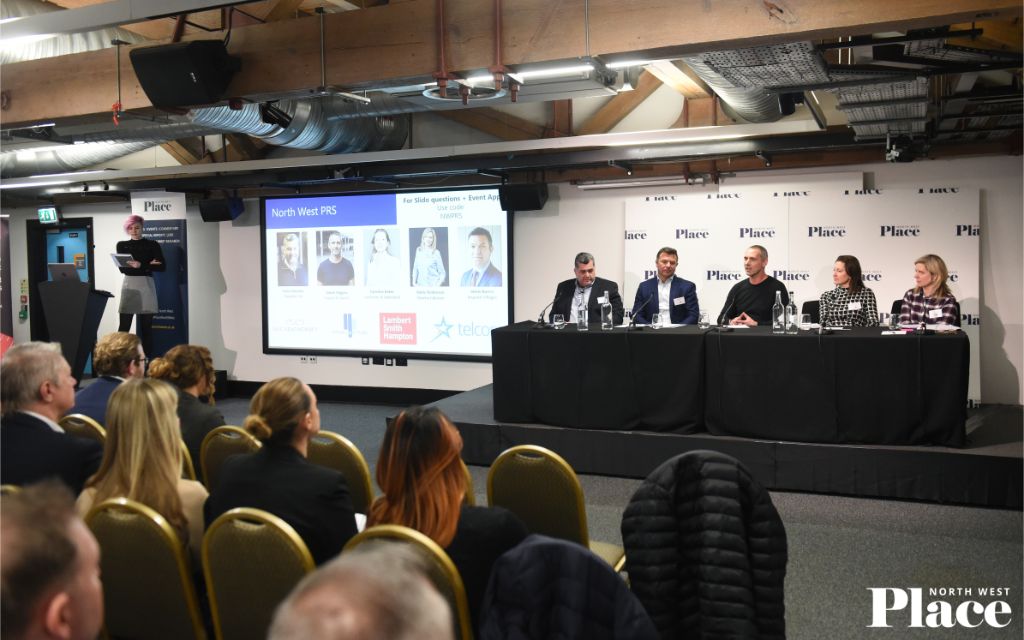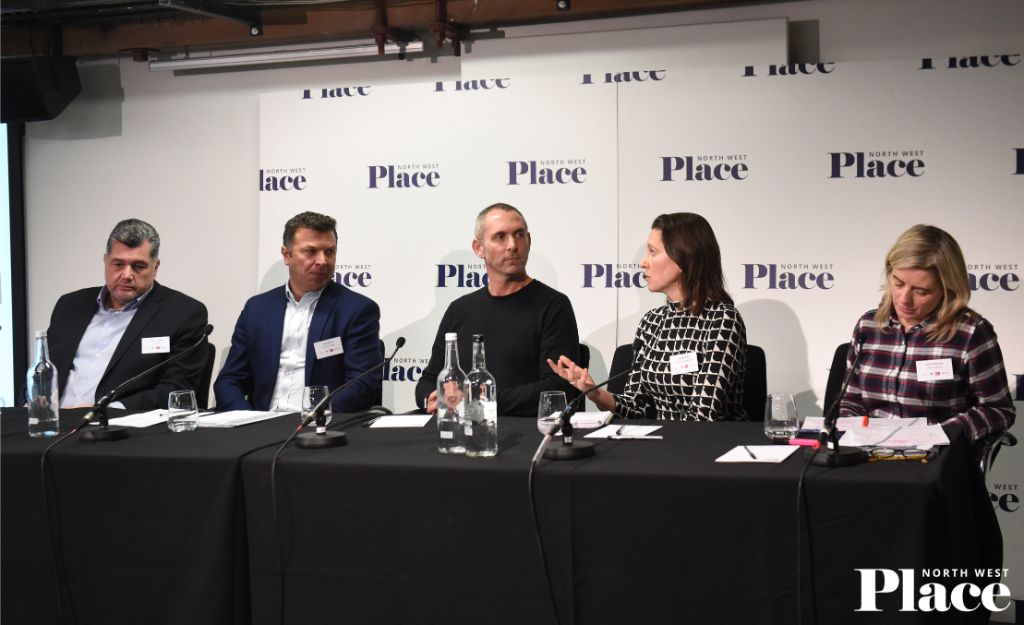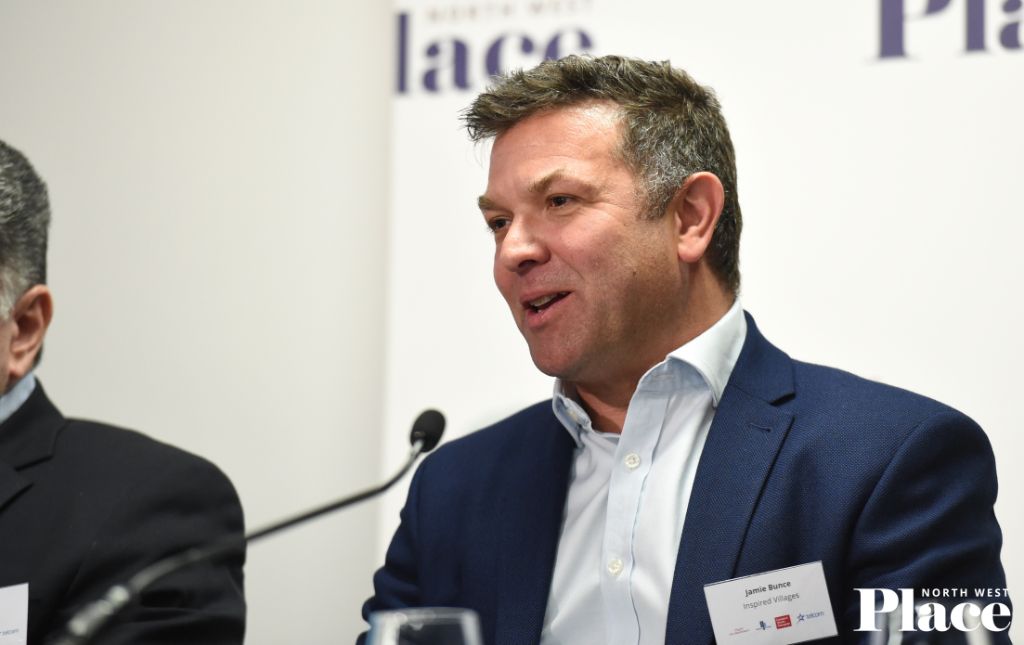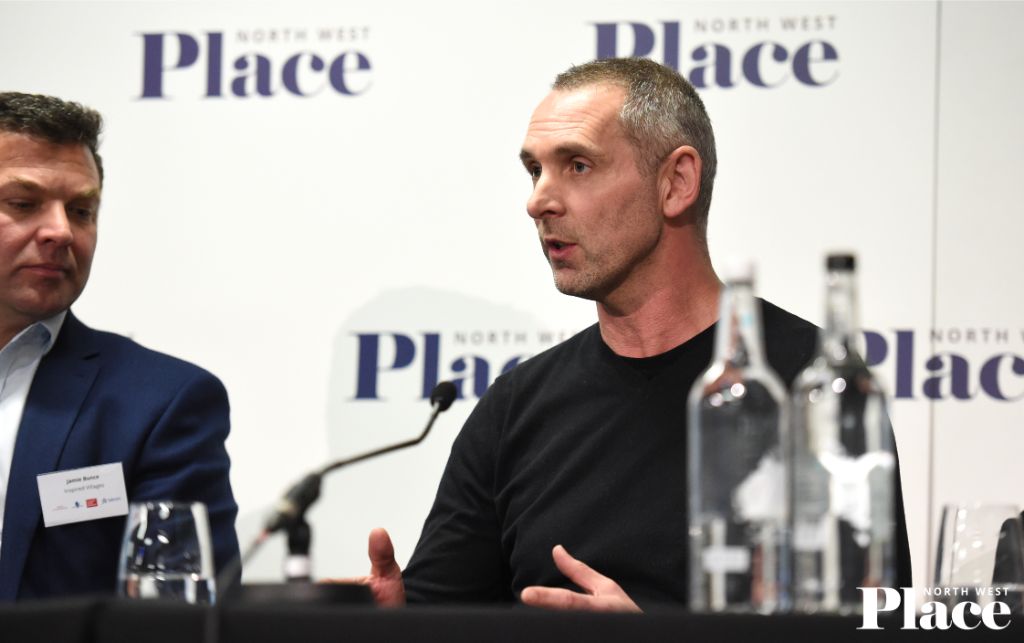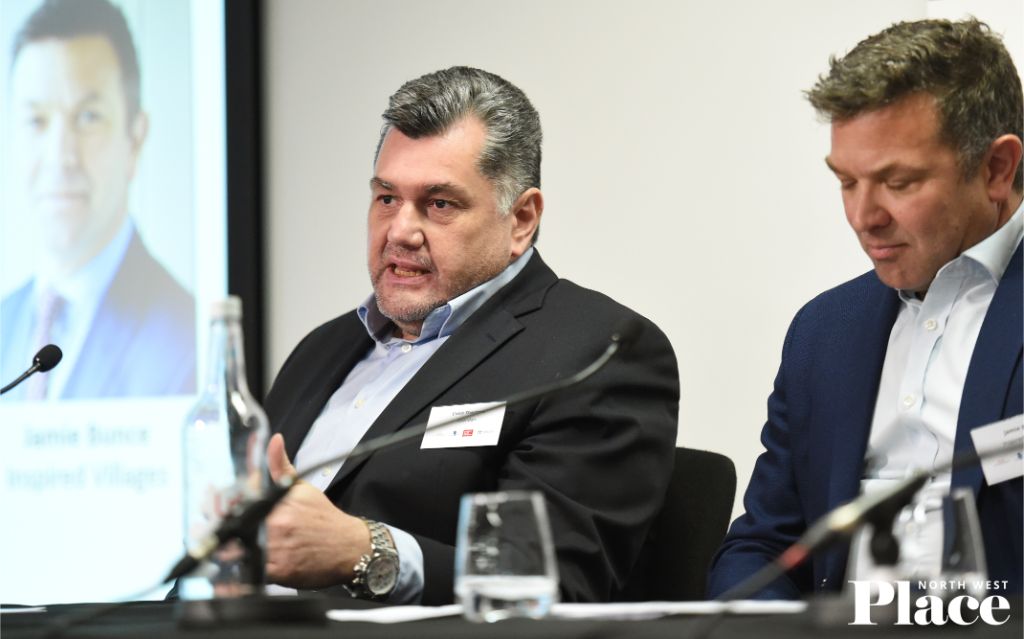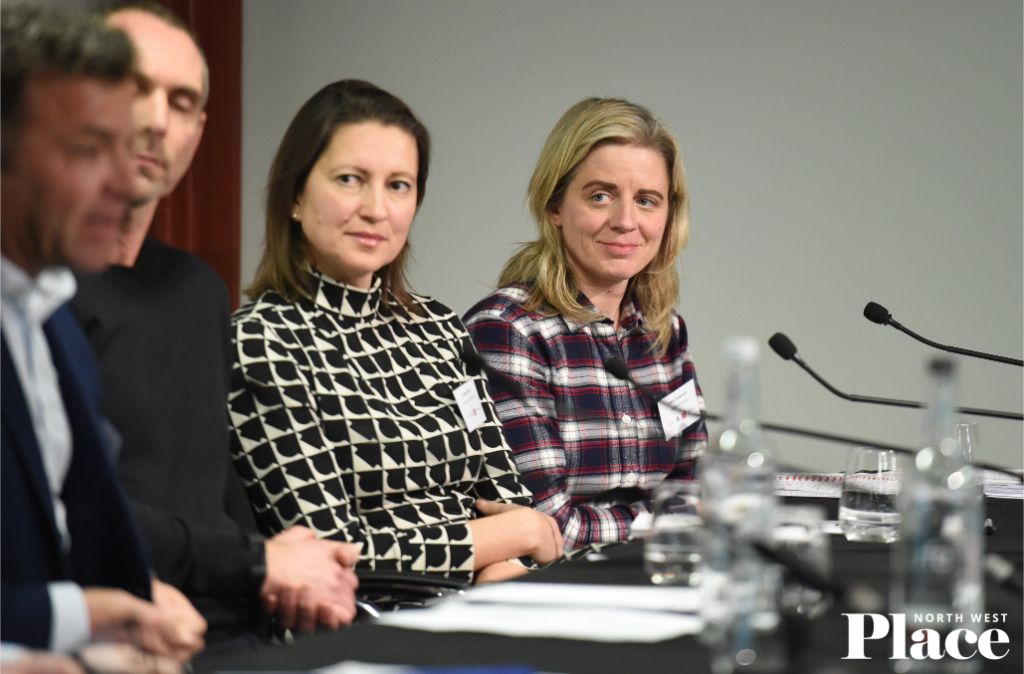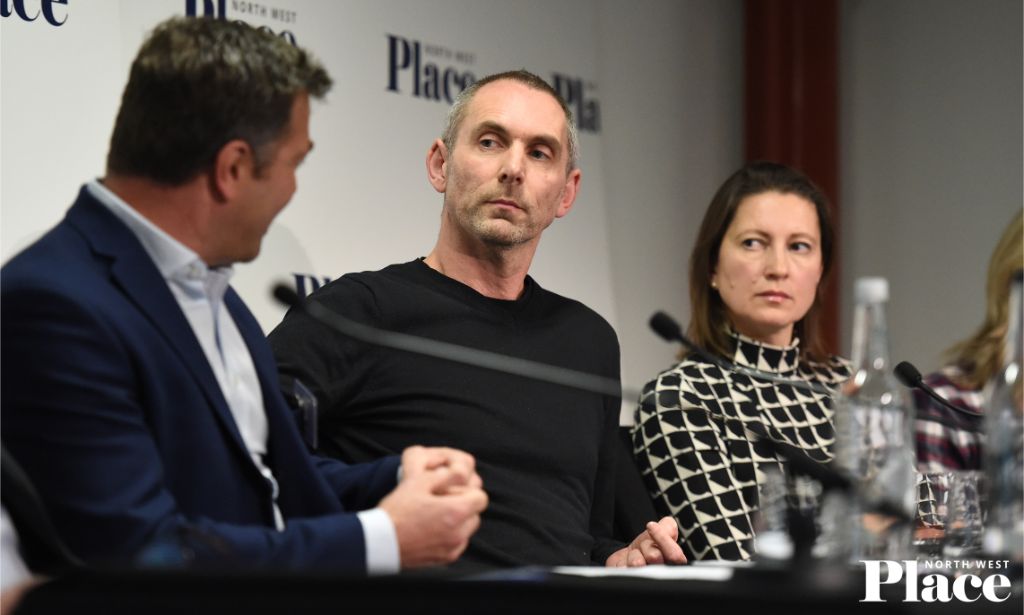Event Summary
North West PRS | Summary, slides + photos
Over-pricing of city centre sites, the future of co-living, and growing momentum around suburban build-to-rent were the hot topics at this Place North West event.
More than 300 people attended the sold-out conference at Manchester’s Science & Industry Museum, with speakers including representatives from Glenbrook, Vita Group, Oppidan Life, Capital & Centric, and many others.
The half-day event was sponsored by DAC Beachcroft, Rendall & Rittner, Lambert Smith Hampton and Telcom, and was chaired by Jessica Middleton-Pugh, contributing editor of Place North West.
PRS and politics
Ian Scott, national head of build-to-rent and PRS at Lambert Smith Hampton, delivered a presentation on the evolution of investment in the PRS market over the past two years.
- Manchester has led the charge in the PRS sector, which has the highest number of rental units in the UK outside London, he said.
- The ‘alternatives’ market, which includes PRS, BTR and hotels, has matured and attracted significant investment despite a UK-wide “Brexit pause”, which slowed down investment to £31m in 2019, from £60m in 2018, across the country.
- “Approximately 1,750 PRS units have been delivered, and now that we have data, we’re beginning to understand what people want. There are 2,500 BTR units set to be delivered in 2020.” Scott said the market take-up in Manchester is bigger than ever expected, and cited Anaconda Cut’s leasing of 350 units in under 12 months as “remarkable”.
- There are complications in the market, such as a rapid rise in construction and land costs, increased need for affordable housing and the fact that BTR is a “lifestyle” choice. However, notable developments like The Astley, Burlington, Anaconda Cut, Moda and Middlewood Locks show there is faith that the trend will continue.
Building flexibility
Scott was followed by John Badman, residential director at CallisonRTKL, who gave a presentation focused on delivering designs that are sensitive to the needs of both investors and tenants.
- “From a design perspective, there are three critical success factors: the cost of the development, its operation, and its value,” he said. For CallisonRTKL, it’s “about giving people choice and flexibility, which the US market already embraces”.
- There is an amenity debate, and in some schemes there is an “amenity arms race”, but for Badman, “in a mature market, we need to go beyond and provide moral fulfilment and creativity, which is where placemaking comes into it.” Creating the right amenity space, and associated events, leads to happier tenants and means they are retained for longer.
- Building in flexibility while trying to keep up with changing trends is a challenge, but there is opportunity for more variety in the market. “People are rating you on social media, so you need to do research before [planning] the development, to understand what the local area offers and what people want. What you’re doing is trying to attract like-minded people and building tribes. People want to be fulfilled and excited, which is driven through experience, and your development needs to have the ability to adapt to the times.”
Demand and supply
Scott and Badman then joined a panel with Guy Butler, co-founder of Glenbrook, and Andrew Cook, assistant fund manager at M&G Real Estate.
- “The question of whether demand will meet supply is still making investors skittish,” Scott began. “Overall, when you look at Manchester, there is a predicted 100,000-strong population by 2025. Every year you’ve got more and more people who want to live in the city.” He went on to say that other towns in Greater Manchester, such as Stockport and Rochdale, have become a focus for greater development. “You might see local investors, such as councils, invest in their housing stock. Apart from totally deprived towns, most of the areas in Greater Manchester are popular and could sustain some level of BTR.”
- For Badman, “design underpins rent and construction costs, and long-term investors aim to provide quality developments because it’s easier to retain tenants, so they build flexibility into their schemes.” Construction costs are always going to be a challenge, “[this] is the nature of the UK at the moment, not just Manchester, and the prices end up [inflating] the rent and the residents will have to pay for it”.
- Butler concurred: “Construction costs are pricing investors out of the market.” Glenbrook opened Duet in MediaCity and “one of the first things [we] realised was that we are the middle market, where rents are reasonable and still in demand. We can’t compete in the city centre, where Renaker is building, without worry of build and land costs.” Butler predicted there is going to be a resurgence of sites available at a reasonable price in the months to come, but the rise in construction costs “will remain a challenge”.
- “It has been a year since The Astley [in the Northern Quarter] filled 135 units in six months, which we potentially underpriced,” said Cook. “It’s a fickle market but if you meet demand then schemes will be filled quickly.” However, as developments can take years to come to market, design details agreed at the beginning of the process may have to be changed in the final product. “We’re exploring retrofitting with broadband, as it’s become more in demand, along with things like security”, he said.
- To maximise yield, Cook said there needs to be more studios and one-bedroom flats on offer, but as the requirement is controlled by local authorities, they need to change. “Shortage of stock has driven single bedroom prices up, and there is a limit of three bedrooms, too, so I’d like to see at least 15% of new schemes have a three-plus bedroom offer.”
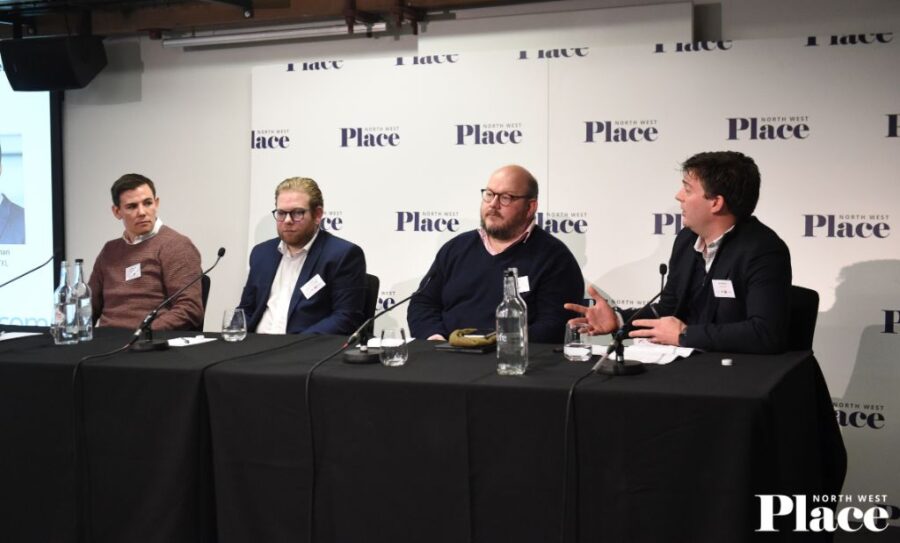
From left: Andrew Cook, M&G Real Estate; Ian Scott, Lambert Smith Hampton; Guy Butler, Glenbrook; John Badman, CallisonRTKL
Social isolation
Next, David Ancell, brand and product director at Vita Group, delivered a presentation on societal issues that co-living schemes can attempt to tackle.
- Co-living was born out of the need for affordability and a sense of community, and, for Ancell, “the average millennials live in professional HMOs and city centre flatshares, but in areas like Chorlton and Didsbury, these homes are needed for families”, so expanding the offer for co-living means more flexibility for people in different stages of life
- The co-living sector gets “bad press with regard space standards” but when you look at HMOs and student accommodation, “people have no issue with students living in 215 sq ft spaces, or young professionals living in 70 sq ft, sharing one bathroom between four people.” He went on to say that co-living developments “are so much more than space standards, including intelligent design, efficiency of space, the operational offer, community activation and amenities.”
- Vita’s co-living offer Union will tackle the community aspect. “Why can’t graduates live in the same community as more senior colleagues? We shouldn’t be creating micro-communities or assuming matching demographics when factors like social isolation is a rising problem.”
- The first Union scheme is set to be on the site of the former Granada Studios on St John Street. “We’re providing residents with mixed-use schemes that offer co-working, libraries and private dining spaces. There is an international element to this as not everybody wants to socialise over a drink anymore and food has taken its place. The demographic cares about living in a nice space that is a step ahead of student accommodation”
Inter-generational living
A second panel then explored the future of co-living, PRS schemes for the elderly, and the growth of quality rental products in outer towns. The panel was made up of Colin Shenton, chief executive of Oppidan and Ziferblat, Katie Tonkinson, partner and head of Studio North at Hawkins\Brown, Adam Higgins, co-founder of Capital&Centric, Caroline Baker, partner at Cushman & Wakefield, and Jamie Bunce, chief executive of Inspired Villages, L&G’s co-living operator.
- For Shenton, Oppidan sits at the smaller end of the co-living offer. “Some people don’t want to live with 500 others, but maybe 20 to 25 people.” The company has tried and tested its offer in the Northern Quarter, and now there are six more schemes in the pipeline.
- In the elderly living sector, Bunce said there are similarities between the PRS offers for younger people and retirement communities. “The reality is that there is an enormous under-supply of homes for older people, and co-living strips away the hassle of selling a house.” He also sees more of a demographic mix. “We need to break down the immediate assumption that only young people want to live in communities. Our residents love it when there are children around – it’s all about inter-generational living and having more open doors.”
- Tonkinson agreed and noted that China and the Netherlands were ahead of the UK with their inter-generational offers. “We’re working on an inter-generational scheme that contains both a school and a care home, and the way the amenity space works is that the school uses it during the day and the rest of the community at other times. We need to change the mindset of how open space is used. Having the social and physical infrastructure in the right areas allows for inter-generational schemes to work.”
- Higgins also agreed with Bunce on changing the established norms about the types of demographic entering rental developments. “At Kampus, we thought it would just be for graduates, but the sign-up data we’ve collected shows a much wider variety of people than anticipated.” He also believed there is a huge opportunity for low-rise developments in surrounding towns where there are good employment opportunities available, and to where you can attract a wide range of age groups, which builds a community.”
- Baker cited Macclesfield as a great example of this. “Macclesfield is driven by employment strategies because of Bruntwood at Alderley Edge. Connectivity is the most important thing and that’s one of the reasons Manchester has succeeded before anywhere else. Stockport is also doing well because its connectivity is inherent.”
- When asked if co-living was a competitor to PRS, Shenton said the two sectors are “complementary as they offer different things for different markets”.
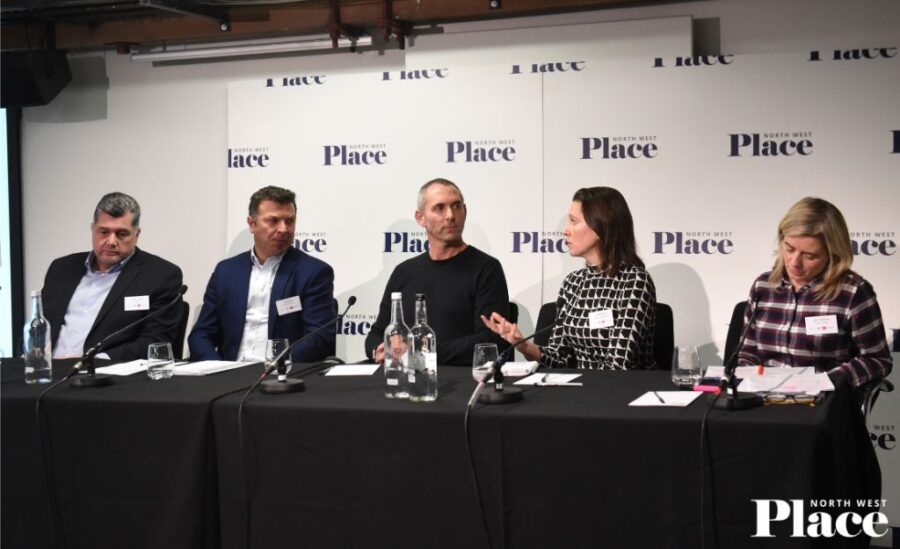
From left: Colin Shenton, Oppidan Life; Jamie Bunce, Inspired Villages; Adam Higgins, Capital & Centric; Caroline Baker, Cushman & Wakefield, and Katie Tonkinson, Hawkins\Brown
The presentation slides can be accessed below:
Ian Scott, Lambert Smith Hampton
Tickets are on sale for Place North West’s Lancashire Development Update which will take place on – 12:30 at the Mercure Dunkenhalgh, Blackburn.
Find details of all upcoming Place events here.
Click any image below to launch gallery
- Ian Scott, Lambert Smith Hampton
- Ian Scott, Lambert Smith Hampton
- John Badman, CallisonRTKL
- John Badman, CallisonRTKL
- Andrew Cook, M&G Real Estate
- Guy Butler, Glenbrook
- Ian Scott, Lambert Smith Hampton
- After taking part in a Place North West event together Scott and Butler, pictured centre, carried the conversation for a podcast
- Guy Butler, Glenbrook
- John Badman, CallisonRTKL.
- Andrew Cook, Lambert Smith Hampton
- David Ancell, Vita Group
- From left: Colin Shenton, Oppidan Life; Jamie Bunce, Inspired Villages; Adam Higgins, Capital & Centric; Caroline Baker, Cushman & Wakefield; and Katie Tonkinson, Hawkins\Brown
- From left: Colin Shenton, Oppidan Life; Jamie Bunce, Inspired Villages; Adam Higgins, Capital & Centric; Caroline Baker, Cushman & Wakefield; and Katie Tonkinson, Hawkins\Brown
- From left: Colin Shenton, Oppidan Life; Jamie Bunce, Inspired Villages; Adam Higgins, Capital & Centric; Caroline Baker, Cushman & Wakefield; and Katie Tonkinson, Hawkins\Brown
- Jamie Bunce, Inspired Villages
- Adam Higgins, Capital & Centric
- Colin Shenton, Oppidan Life
- Jamie Bunce, Inspired Villages; Adam Higgins, Capital & Centric; Caroline Baker, Cushman & Wakefield; and Katie Tonkinson, Hawkins\Brown
- Jamie Bunce, Inspired Villages; Adam Higgins, Capital & Centric; Caroline Baker, Cushman & Wakefield; and Katie Tonkinson, Hawkins\Brown


